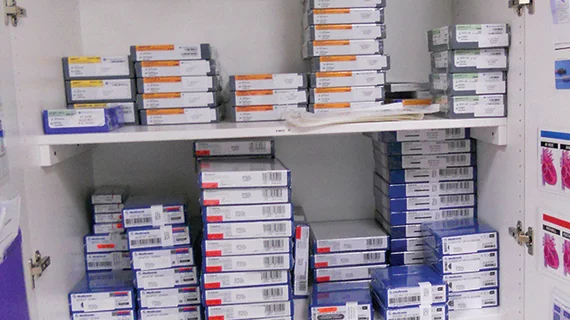Making cardiac catheterization labs (CCLs) more efficient less wasteful could go a long way toward reducing the large carbon footprint associated with healthcare, according to a new commentary published in JACC: Cardiovascular Interventions.[1]
“At the current trajectory, the global healthcare–related carbon footprint is expected to triple by 2050, highlighting an urgent need for scalable solutions,” wrote first author Mirvat Alasnag, MD, an interventional cardiologist and director of the CCL at King Fahd Armed Forces Hospital in Saudi Arabia, and colleagues. “In the United States, healthcare delivery accounts for a disproportionately high amount (10%) of national greenhouse emissions. Like operating rooms, CCLs are intense users of energy and other resources that result in a substantial carbon footprint.”
Alasnag et al. noted that one of the most important areas CCLs can focus on is supply chain management. When CCLs become more efficient—both in reducing unnecessary purchases and limiting waste—it can help avoid shortages and lead to significant cost savings.
“The recent COVID-19 pandemic revealed major weaknesses in CCL supply chains across the United States,” the authors wrote, highlighting the issues many labs had in recent years with acquiring enough iodinated contrast media.
Tracking resources and empowering employees
Tracking resource utilization and waste in the same manner one would track patient outcomes is one way to begin the process of becoming a more sustainable CCL.
“We believe that adding resource utilization and waste monitoring to existing quality metrics in the CCL is essential,” the authors wrote. “As members of the continuous quality improvement committee, physicians, nurses and administrators should be collectively charged with the task of establishing tools to track and measure resource utilization and waste so that performance could be tracked across CCLs and institutions.”
The development of national benchmarks related to the utilization and waste of CCL resources, the group added, could provide context for individual institutions looking to improve.
Another important piece of the puzzle is the management of resource shortages. The commentary’s authors recommended empowering an interdisciplinary team of employees to act and make key decisions when shortages are identified. This limits a facility’s risk of making impulsive decisions that ultimately backfire and lead to even more confusion.
Reduce, reuse and recycle to reduce cath lab waste
The three R’s of protecting the environment—reduce, reuse and recycle—are especially important for any CCL striving to become more sustainable. The “reduce” part of the equation is fairly straightforward: order and use only the resources you need, aiming for as close to 0% waste as possible.
“Removing nonessential materials to build leaner ‘cath packs’ can have a significant impact on utilization,” the authors wrote. “Over a million CCL procedures are performed in the U.S. annually; a 25% to 50% reduction in material consumption would significantly divert waste away from landfills.”
Electronic medical records, the group added, have shown that reducing paper in healthcare is possible. They suggested a “paper use audit” for identifying all the different ways paper is used in the CCL and seeing how many of those ways can be easily avoided going forward.
The “reuse” piece becomes important when CCLs consider how much single-use items are used on a regular basis. Disposable gowns, for example, do provide convenience, but what about sterilizing reusable gowns so they can be worn again and again? Blood pressure cuffs that are sustainable can also be acquired; these may cost more money initially, but that can balance out more quickly than CCL leaders may realize.
“A conversation on the safety of resterilization and cost savings is necessary and will require collaboration and buy-in with multiple stakeholders, including team members evaluating infection control standards,” the authors wrote. “Also, since the U.S. Food and Drug Administration regulates single-use medical devices, any change in existing practice would require their input and approval.”
The “recycle” part of things comes down to ensuring your hospital is part of an effective recycling program. This is rare in the United States for now, but that could change over time.
Perhaps more CCLs vocalizing their interest in recycling could lead to more hospitals making it a priority.
Read the full commentary here.

